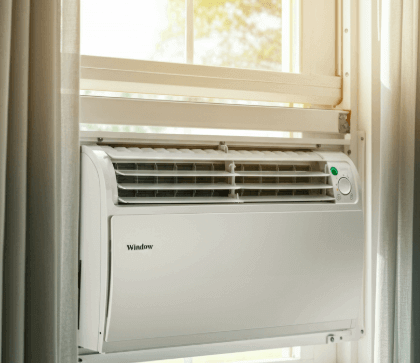Understanding the capacity of your air conditioning unit is essential for upholding a productive and pleasant indoor atmosphere. An efficient method to assess this capability is by inspecting the model number of your air conditioning unit. This blog will guide you through the process to determine AC tonnage from model number, providing you with practical tips and easy-to-follow steps. Whether you are a homeowner looking to upgrade your system or a technician needing accurate information, knowing how to determine AC tonnage from model number can save you time and ensure you make the right decisions for your cooling needs.
Real estate investors Steve Daria and Joleigh emphasize the importance of understanding AC tonnage when evaluating property investments. By accurately determining the cooling capacity from the model number, they ensure their properties remain comfortable and efficient. Following this guide will provide you with the same savvy approach that Steve Daria and Joleigh used in their successful real estate ventures.
Understanding AC Tonnage
AC tonnage is a crucial concept in understanding the cooling potential of an air conditioning unit, and it is measured in tons.
Specifically, one ton of cooling capacity equals the ability to cool 12,000 British Thermal Units (BTUs) per hour.
To put it simply, the tonnage of an AC unit indicates how much heat the unit can remove from a space within an hour.

Therefore, an air conditioning unit with a higher tonnage has more cooling power and can cool a larger area more efficiently.
Why AC Tonnage Matters
AC tonnage is crucial because it determines whether the unit can effectively cool your space:
Undersized Unit
Struggles to maintain a comfortable temperature. An undersized AC unit lacks the necessary cooling capacity to effectively decrease the temperature in your space.
As a result, it will run continuously without reaching the desired comfort level, leading to increased wear and tear on the system.
This constant strain can shorten the lifespan of the unit and result in higher maintenance costs over time.
Oversized Unit
Leads to higher energy bills and excess humidity. An oversized AC unit cools the space too quickly, causing frequent on-and-off cycling.
This inefficiency can prompt higher energy consumption and increased utility bills.
Moreover, the rapid cooling doesn’t allow the unit to run long enough to effectively dehumidify the air, resulting in excess humidity and a less comfortable indoor environment.
Get An Offer Today, Sell In A Matter Of Days
Common Tonnage for Different Spaces
- Residential Homes: Typically require 1.5 to 5 tons.
- Small Commercial Spaces: Generally need 5 to 10 tons.
- Larger Commercial Buildings: May require 10 tons or more.
How to Determine AC Tonnage from Model Number
How to determine AC tonnage from model number? Here’s how:
Finding the Model Number
- Outdoor Condenser: Check the back or side.
- Indoor Unit: Look inside the furnace or air handler compartment.
- User Manual: Often listed in product documentation.
Decoding the Model Number
Model numbers consist of letters and numbers, where:
- Digits: Often indicate tonnage (e.g., ’24’ could mean 2 tons).
Examples of Model Numbers
- Carrier Model 24ABC624A003: ’24’ indicates 2 tons.
- Trane Model XR16-4TTX6048A1000A: ’48’ signifies 4 tons.
- Lennox Model ML14XC1-030-230: ‘030’ shows 2.5 tons.
Tips for Accurate Determination
How to determine AC tonnage from the model number? Here are the essential tips for accurate determination:
Double-Check with Documentation
Reviewing user manuals or visiting manufacturer websites provides accurate information on AC tonnage.
These resources typically include detailed specifications and model number breakdowns that specify tonnage.
If the model number doesn’t directly indicate tonnage, these documents often provide clear guidelines or contact information for further clarification.
Consult a Professional
Seeking advice from HVAC professionals ensures precise assessment of your cooling requirements.
They consider factors like property size, insulation, and climate to recommend the ideal tonnage for efficient cooling.
Professionals can also inspect existing units or assess new installations to ensure optimal performance and energy efficiency tailored to your specific needs.
Use Online Tools
Online tools and calculators designed for decoding AC model numbers can streamline the process of determining tonnage.
These tools typically interpret model number formats from various manufacturers, providing quick insights into tonnage specifications.

Importance of Proper AC Sizing
While it’s essential to learn and determine AC tonnage from the model number, it’s also important to determine proper AC sizing.
Enhanced Comfort
An air conditioning unit with the correct tonnage ensures consistent temperatures throughout your property.
This uniform cooling prevents hot spots and cold areas, providing a more comfortable living environment.
Properly sized units maintain the desired temperature efficiently, responding appropriately to temperature fluctuations without overworking.
Reduced Wear and Tear
When an AC unit is correctly sized, it experiences less strain during operation, leading to a longer lifespan and fewer breakdowns.
Oversized units tend to short cycle, turning on and off frequently, which accelerates wear and tear on components.
Conversely, undersized units run continuously to meet cooling demands, causing excessive stress on the system.
Both scenarios can lead to frequent repairs and premature failure.
Energy Efficiency
An AC unit with appropriate tonnage operates more efficiently, and conserving energy leads to lower utility costs.
Oversized units use more electricity than necessary, causing higher energy consumption and increased operational costs.
Undersized units, while they may use less power in theory, often run continuously, negating any potential savings and straining your energy budget.
Efficient operation not only saves cash but also reduces the environmental effect of your cooling system by minimizing energy waste.
Conclusion
Knowing how to determine AC tonnage from the model number is pivotal in ensuring your property remains cool and efficient. By understanding what AC tonnage entails, why it’s crucial, and how to accurately decode it, you can make the correct choice about your cooling needs.
Remember to verify information with documentation or seek professional advice for precision. Proper maintenance and periodic inspections will further optimize your AC unit’s performance, saving you money and ensuring comfort.
**NOTICE: Please note that the content presented in this post is intended solely for informational and educational purposes. It should not be construed as legal or financial advice or relied upon as a replacement for consultation with a qualified attorney or CPA. For specific guidance on legal or financial matters, readers are encouraged to seek professional assistance from an attorney, CPA, or other appropriate professional regarding the subject matter.

